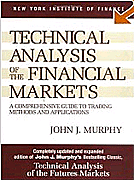Why Gold is going up amidst summer doldrums...
Here's a couple of well educated guesses (firmly anchored in fundamentals) for gold price resilience during this "shopping season".
"The countries of the Far East have had a strong historical appetite for gold and this past month, for citizens of two of them, ownership just got easier.
In China, the Shanghai Gold Exchange is launching individual gold bullion trading through a partnership with the Industrial Bank.
This follows last year’s establishment of special bank accounts that let holders trade in virtual gold. Now they can buy the real thing, with only a 100-gram minimum. And investors can take home the bullion at lower prices than those charged by jewelers and coin makers.
Since the Chinese have traditionally kept gold bullion as a safe haven to hedge against currency mismanagement, political crisis and as a symbol of good fortune, we can expect demand to track that country’s growing wealth.
Perhaps sensing this, the Chinese government in mid-July moved to ramp up domestic supply by allowing overseas firms, “with the latest and best technology,” to bid for exploration rights at the country's largest potential gold deposit, the Yangshan in Gansu Province. Yangshan has at least 5,120,000 ounces of gold in proven reserves.
Meanwhile, in Japan, the Osaka Securities Exchange announced that it will list Japan's first exchange-traded gold fund in August. The minimum trading lot for the ETF will be 10 units, with each unit equal to one gram of gold. While this new product makes it simple for individuals to participate in the gold trade, it could be also be attractive for Japanese institutional investors, as it is denominated in yen while its price will be linked to the gold fix in London.
Japanese demand for gold was over 200 tons in the year ended March 31, but 85% of that went for industrial uses. Some analysts estimate that, with the introduction of the ETF, that number could double, or more. If that sounds optimistic, consider that the holdings of streetTRACKS, the largest U.S. gold ETF, is closing in on 500 tons."
Furthermore
"In the past month alone, the dollar has experienced about a 3% slide in value against the euro, and nearly as much versus the British pound and Canadian dollar. The closely watched dollar index is now at lows not seen since December of 2004 and, before that, 1995.
The decline is not limited to only industrialized countries, it has lost ground against the currencies of emerging markets, as well. In a year, the dollar has tumbled 15% against the Brazilian real, 13% against the Indian rupee, and 5% versus the Chinese yuan.
Things have gotten so bad that the Russians are actually trading their dollars for once-spurned rubles. The amount of U.S. dollars held by private Russian citizens has purportedly plunged, from $35 billion in 2002 to less than $12 billion as of July 1 of this year, according to a statement from the Russian Central Bank in mid-July.
Shamelessly, the Federal Reserve continues to put the blame for inflation on, believe it or not, us. Or, our expectations, to be more exact. In the recent words of Chairman Ben Bernanke: “Undoubtedly, the state of inflation expectations greatly influences actual inflation and thus the central bank's ability to achieve price stability.”
That’s right, it’s not the flood of dollars deluging the market that is pushing down the buck’s value both here and abroad. No, it’s our fault for worrying about inflation.
Bernanke may think we’re stupid enough to buy this foolishness, but he can’t deny that foreigners are increasingly unwilling to accept it anymore. Moreover, those holding dollars are turning not only to euros and rubles, but to gold. A couple of weeks ago, the Qatar Central Bank reported that it had quadrupled its gold holdings between January and the end of April. Though Qatar’s vault is small, this is an indication of where the Middle East, and much of the rest of the world, is heading."
"The countries of the Far East have had a strong historical appetite for gold and this past month, for citizens of two of them, ownership just got easier.
In China, the Shanghai Gold Exchange is launching individual gold bullion trading through a partnership with the Industrial Bank.
This follows last year’s establishment of special bank accounts that let holders trade in virtual gold. Now they can buy the real thing, with only a 100-gram minimum. And investors can take home the bullion at lower prices than those charged by jewelers and coin makers.
Since the Chinese have traditionally kept gold bullion as a safe haven to hedge against currency mismanagement, political crisis and as a symbol of good fortune, we can expect demand to track that country’s growing wealth.
Perhaps sensing this, the Chinese government in mid-July moved to ramp up domestic supply by allowing overseas firms, “with the latest and best technology,” to bid for exploration rights at the country's largest potential gold deposit, the Yangshan in Gansu Province. Yangshan has at least 5,120,000 ounces of gold in proven reserves.
Meanwhile, in Japan, the Osaka Securities Exchange announced that it will list Japan's first exchange-traded gold fund in August. The minimum trading lot for the ETF will be 10 units, with each unit equal to one gram of gold. While this new product makes it simple for individuals to participate in the gold trade, it could be also be attractive for Japanese institutional investors, as it is denominated in yen while its price will be linked to the gold fix in London.
Japanese demand for gold was over 200 tons in the year ended March 31, but 85% of that went for industrial uses. Some analysts estimate that, with the introduction of the ETF, that number could double, or more. If that sounds optimistic, consider that the holdings of streetTRACKS, the largest U.S. gold ETF, is closing in on 500 tons."
Furthermore
"In the past month alone, the dollar has experienced about a 3% slide in value against the euro, and nearly as much versus the British pound and Canadian dollar. The closely watched dollar index is now at lows not seen since December of 2004 and, before that, 1995.
The decline is not limited to only industrialized countries, it has lost ground against the currencies of emerging markets, as well. In a year, the dollar has tumbled 15% against the Brazilian real, 13% against the Indian rupee, and 5% versus the Chinese yuan.
Things have gotten so bad that the Russians are actually trading their dollars for once-spurned rubles. The amount of U.S. dollars held by private Russian citizens has purportedly plunged, from $35 billion in 2002 to less than $12 billion as of July 1 of this year, according to a statement from the Russian Central Bank in mid-July.
Shamelessly, the Federal Reserve continues to put the blame for inflation on, believe it or not, us. Or, our expectations, to be more exact. In the recent words of Chairman Ben Bernanke: “Undoubtedly, the state of inflation expectations greatly influences actual inflation and thus the central bank's ability to achieve price stability.”
That’s right, it’s not the flood of dollars deluging the market that is pushing down the buck’s value both here and abroad. No, it’s our fault for worrying about inflation.
Bernanke may think we’re stupid enough to buy this foolishness, but he can’t deny that foreigners are increasingly unwilling to accept it anymore. Moreover, those holding dollars are turning not only to euros and rubles, but to gold. A couple of weeks ago, the Qatar Central Bank reported that it had quadrupled its gold holdings between January and the end of April. Though Qatar’s vault is small, this is an indication of where the Middle East, and much of the rest of the world, is heading."















![[Most Recent Quotes from www.kitco.com] [Most Recent Quotes from www.kitco.com]](http://www.kitco.com/images/live/t24_au_en_usoz_6.gif)
![[Most Recent Quotes from www.kitco.com] [Most Recent Quotes from www.kitco.com]](http://www.kitco.com/images/live/au_go_0030_ny.gif)
![[Most Recent Quotes from www.kitco.com] [Most Recent Quotes from www.kitco.com]](http://www.kitco.com/images/live/au_go_0365_ny.gif)
![[Most Recent Quotes from www.kitco.com] [Most Recent Quotes from www.kitco.com]](http://kitconet.com/charts/metals/silver/t24_ag_en_usoz_4.gif)

















0 ΣΧΟΛΙΑ (COMMENTS):
Post a Comment
<< Home